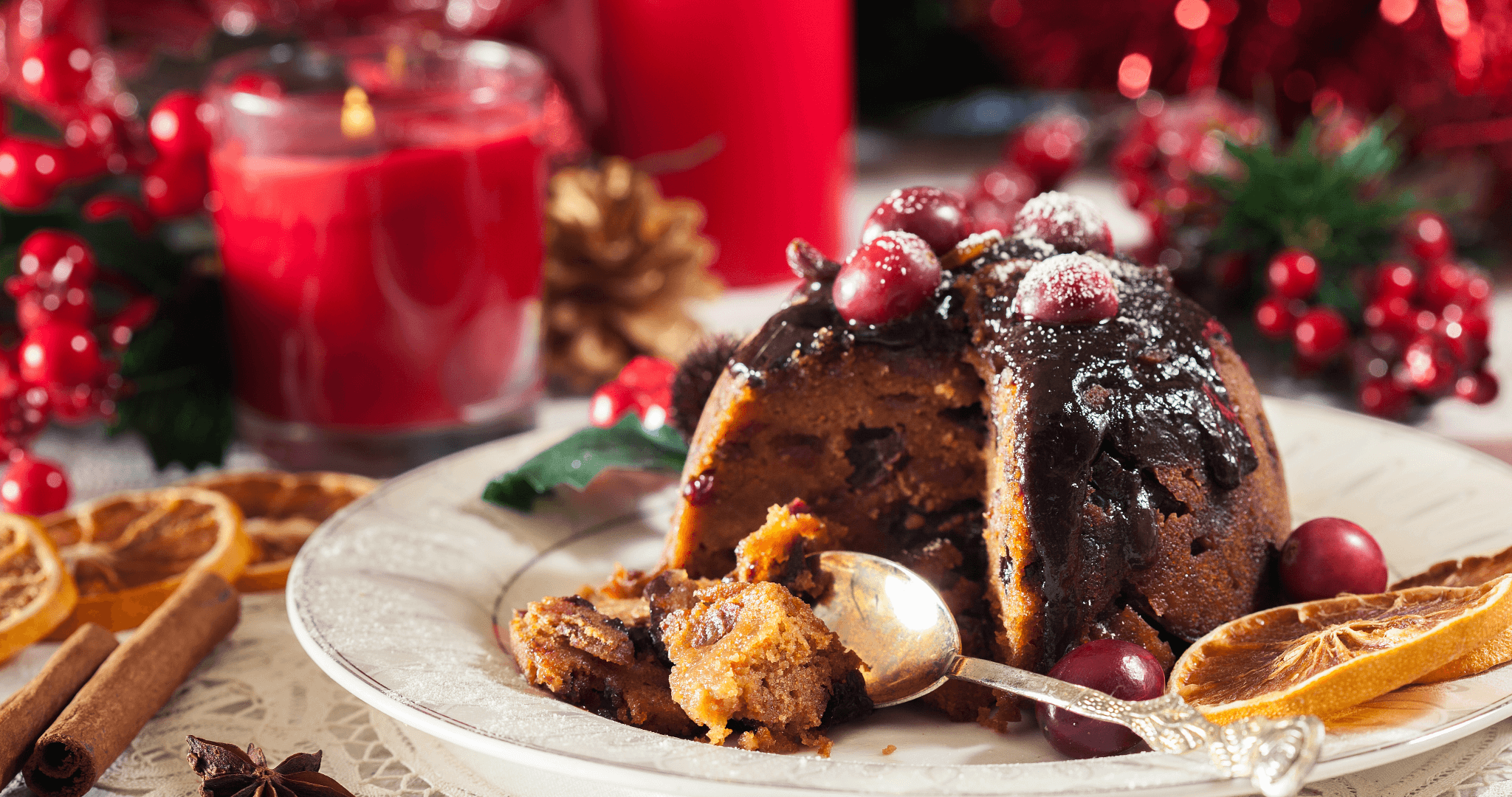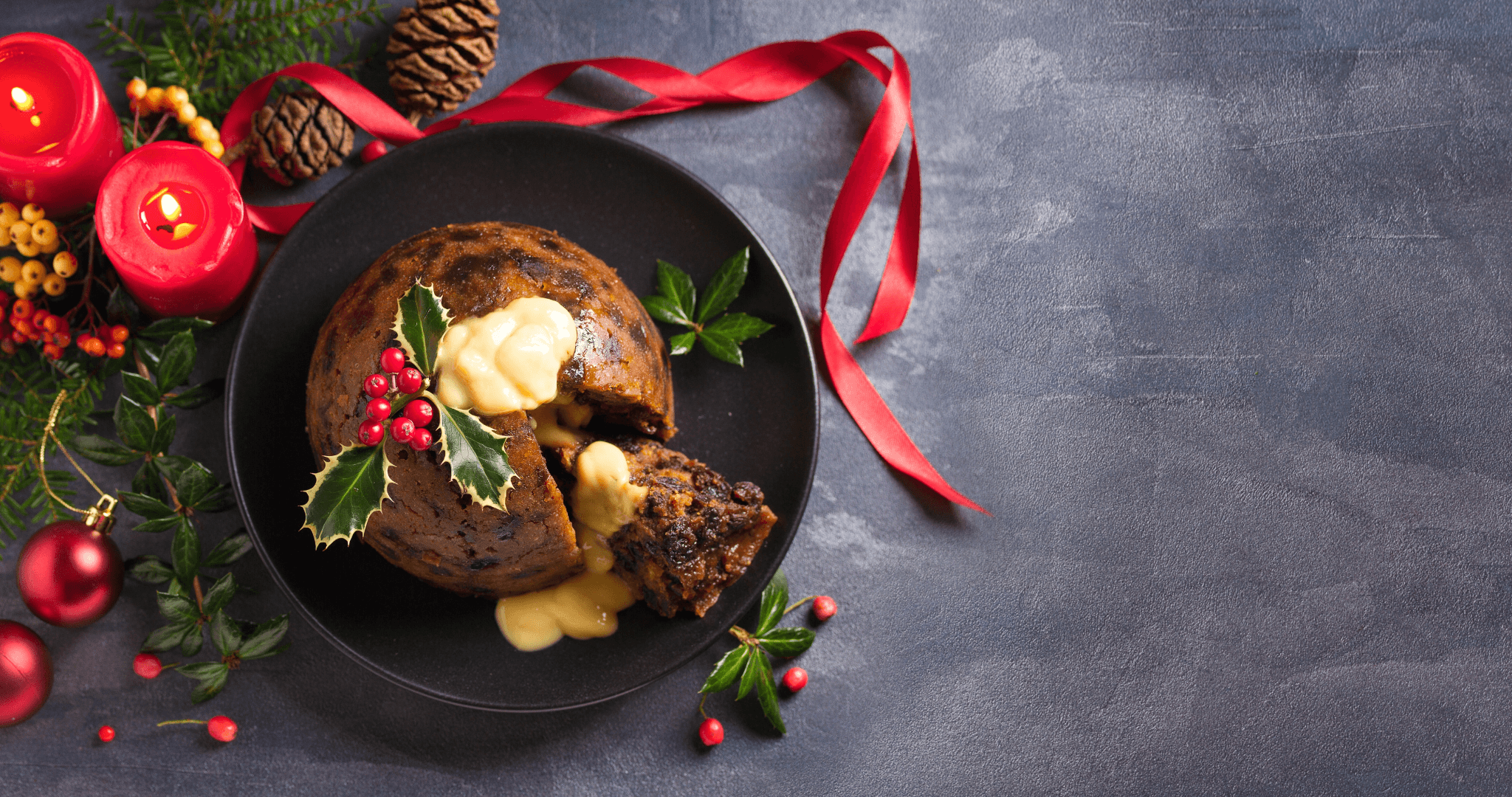The Evolution of Christmas Pudding
Posted by Emma on 27th Nov 2023 Reading Time:
Let's take a stroll down memory lane and chat about a holiday classic: Christmas Pudding. You know, that famous yet often misunderstood dish, also known as plum pudding or figgy pudding. It's the star of Charles Dickens's "A Christmas Carol" and even gets a shoutout in the carol "We Wish You a Merry Christmas" - remember those verses demanding figgy pudding?

This treat has quite the story, tracing back to medieval English sausages. Picture this: a mix of fat, spices, fruits, meats, grains, and veggies, all stuffed into animal stomachs and intestines. Sounds a bit odd, right? But it was all about keeping food fresh back in the day. The first plum puddings appeared in the early 15th century as "plum pottage," a meaty, veggie-heavy dish.
Now, the "plum" in plum pudding wasn't always about actual plums. It was a catch-all term for dried fruits like raisins and currants, with prunes and other dried fruits joining the party when available. By the late 16th century, England was swimming in dried fruit, and plum pudding sweetened up its act, leaving its savoury roots behind. The invention of the pudding cloth was a game changer, making the pudding less reliant on animal products, though suet (a type of fat from around beef and mutton kidneys) remained a key ingredient.
Fast forward to the mid-1600s, and plum pudding had become a Christmas staple. So much so that Oliver Cromwell, not the biggest fan of fun, banned it in 1647, along with other Christmas joys like Yule logs and carol-singing. Thankfully, the ban didn't last forever. By 1660, the pudding was back, and England's first German-born ruler, George I, even got dubbed the "pudding king" after rumours of his love for the dish.
Victorian England really set the standard for Christmas pudding as we know it. It was a time when Christmas traditions were being defined and spread, with journalists, politicians, and novelists (including Dickens) painting a picture of an ideal English Christmas. Even Christmas saving clubs popped up to help families save up for those pudding ingredients.
Stir-up Sunday became a thing - the last Sunday before Advent where families would take turns stirring the Christmas pudding, which was then wrapped, boiled, and set aside to mature until Christmas. By the 19th century, the recipe had more or less settled on suet, brown sugar, raisins, currants, candied orange peel, eggs, breadcrumbs, nutmeg, cloves, allspice, and a generous splash of alcohol.
The Christmas pudding was like a mini-globe, a mix of exotic ingredients from across the British Empire, all held together by traditional English flavours. It was so well-preserved that it became a taste of home for soldiers and colonisers far from England. There's even a story from 1885 about a plum pudding making its way to British soldiers in Afghanistan!

In recent times, the Christmas pudding has adapted to modern tastes. It's often made in molds and comes with fire-safety tips for that dramatic flaming brandy sauce. Its pagan origins, once hidden, are now embraced, like the "snapdragons" game where kids pluck raisins from the flaming brandy, a nod to Celtic Druids. Across the pond, while fruitcake's popularity has dipped, Christmas pudding remains a delightful novelty, tied to traditions like Christmas crackers, paper crowns, and, of course, the tales of Bob Cratchit and Boxing Day.
So, what are your Christmas pudding memories? Ever tried making it yourself, or maybe you have a family recipe passed down through generations? Share your stories and thoughts in the comments below – let's keep the festive spirit alive!

